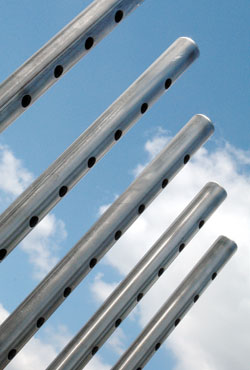Dave Mortimer, national sales manager of Vapac Humidity Control, argues that without humidity control in hospitals, patients can be at risk from superbugs and recovery periods will be lengthened
Comfort, infection control and anti-static are just some of the reasons why temperature and humidification control are crucial in hospital operating theatres. But MRSA and other superbugs has put ventilation systems in hospitals under the spotlight. A number of researchers are actively engaged in looking at humidification - and how it might help counteract the spread of infection.
Researchers at Bradford University are investigating the effects of humidity on hospital superbugs, such as E.coli, and have constructed one of the world's largest biological test chambers to carry out their investigations. The study is likely to take two years to complete, but the focus is very much on how and why patients pick up an infection while in hospital.
Professor Beggs, head of the Bradford Infection Group and
professor of medical engineering at the University of Bradford, says: 'Approximately one in ten patients pick up an infection during a hospital stay - a fresh approach is needed. We are therefore investigating the extent to which humidity control might assist in the fight against infection.'
The research group is modelling the impact of humidity on bacteria and looking at the impact of changes in room humidity on different pathogens. It is also looking at how humidity might be used to control the spread of infection via contaminated surfaces and air in hospital wards.
Air quality in hospitals is a complex issue. Contaminants can be airborne; attracted to dust due to static; or carried by visitors; as well as originate inside the hospital. Ventilation and filtration provides a means of combating contaminants by diluting their concentration. A high standard of air quality can be achieved by ensuring proper ventilation, adequate filtration and humidity management.
While it is recognised that maintaining a comfortable and safe working environment is important for operating teams and patients, for many surgical procedures a carefully managed environment can be critical. For example, for many surgical procedures humidity is essential. Ophthalmic surgery - where the eye needs to be kept moist - accounts for 7% of all surgery in the UK.
Following trials, a paper published in the United States Effects of Humidity on Posterior Lens Opacification During Fluid Air Exchange stated that the use of humidified air promotes better visualisation and enhances surgical performance.
There are many other procedures that require precisely controlled humidity, including brain surgery and open heart procedures. Tissues start to deteriorate if there is not enough moisture in the atmosphere.
Papers have discussed the topic in The British Journal of Anaesthesia and the Journal of Laryngology and Otology.
Humidification systems are already present in operating theatres where the control of air movement and humidity is crucial. Originally, humidification was deemed essential in operating environments because of the static risks and the gases used for anaesthetics.
Many gases are no longer flammable, but static can give rise to dust particles. Theatres, by their very nature, have to be regarded as clean rooms - the cleanest area is working above floor level at the height of the operating table and at elbow height of the surgeon. Correctly balanced humidity helps keep contaminants at low levels.
The majority of humidity problems experienced in hospitals tend to be as a result of poor applications, incorrect installation or lack of maintenance, rather than equipment.
Only when manufacturers are called in to solve problems that have developed and/or retrofit systems is there an opportunity for a manufacturer, such as Vapac, to talk directly to the health engineers who have first- hand experience of what is required.
For example, a hospital in Scotland recently developed problems with its air-handling plant which were affecting air filtration. Examination revealed that the parameters of the unit had changed, therefore altering the airflows in the original design. Condensate was forming on the HEPA filters, because the absorption distance was too long. Having examined the problems, Vapac was able to solve the problem using its Vapasorb multiple-tube steam-
dispersion system.
By consulting directly with manufacturers who are experts in humidification, hospitals will have access to a vast untapped resource of knowledge. Systems will then be installed to meet a specific requirement and be fit for purpose.

Vital organ: Vapac 's Vapasorb multiple-tube steam-dispersion system